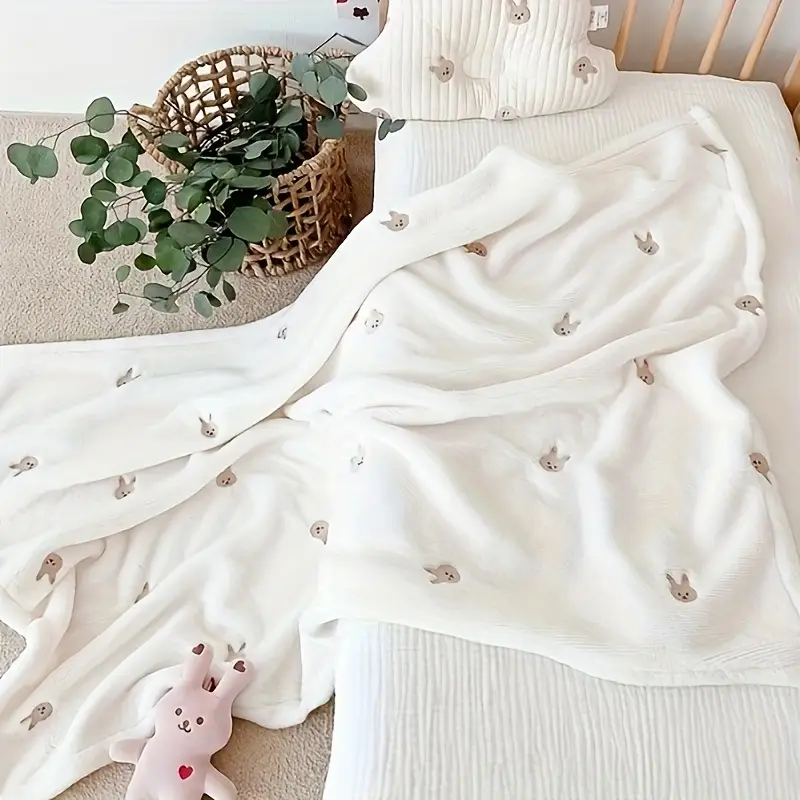
As the cold months approach, ensuring your baby stays warm and cozy becomes a top priority. Choosing the right winter blanket for your baby is essential—not only for comfort but also for safety. However, with so many blankets on the market, parents often find it challenging to pick the best option. This guide covers everything you need to know about winter blankets for babies before making a purchase, helping you keep your little one snug and secure throughout the season.
Why a Winter Blanket Is Essential for Babies
Babies have a harder time regulating their body temperature compared to adults. Their small bodies lose heat quickly, and they don’t sweat efficiently, which means they can become cold faster. A winter blanket helps maintain the right temperature, preventing discomfort and potential health issues like colds or hypothermia.
Using a proper winter blanket also helps parents feel reassured that their baby is protected against chilly drafts and cold nights, especially when outside or during sleep time. It’s important to differentiate between regular blankets and winter blankets—the latter is designed to provide extra warmth with materials suited for colder temperatures.
Key Features to Consider When Buying a Winter Blanket for Baby
When selecting a winter blanket, certain features are crucial:
- Material: Choose fabrics that offer warmth but are breathable to prevent overheating. Popular choices include fleece, Sherpa, and wool blends. Avoid synthetic materials that trap heat excessively.
- Softness: Babies have sensitive skin, so the blanket should be gentle and plush without being itchy.
- Size and Thickness: The blanket should be large enough to cover your baby comfortably but not so thick that it becomes cumbersome or heavy.
- Safety: Look for blankets that meet safety standards and certifications like OEKO-TEX, ensuring they’re free from harmful chemicals. Avoid overly heavy or bulky blankets that could increase the risk of suffocation.
- Ease of Care: Babies tend to make messes, so opt for blankets that are machine washable and durable to withstand frequent cleaning.
Types of Winter Blankets for Babies
There are various types of winter blankets to choose from, each suited to different needs and preferences:
- Traditional Fleece or Sherpa Blankets: These are soft, warm, and lightweight, making them a popular choice for winter.
- Knitted Wool or Wool Blend Blankets: Natural and insulating, these blankets provide excellent warmth but should be soft enough to avoid irritating your baby’s skin.
- Wearable Blankets or Sleep Sacks: These are safe alternatives to loose blankets for younger babies, providing warmth without the risk of covering the baby’s face.
- Layered Blanket Sets: Using multiple lightweight blankets layered together can offer adjustable warmth and flexibility.
How to Use Winter Blankets Safely
Safety is paramount when using any blanket with a baby. Here are some tips:
- For newborns and babies under 12 months, avoid loose blankets in the crib. Instead, use wearable blankets or swaddles designed for safe sleep.
- Ensure the blanket is tucked securely if used in a crib, keeping it away from the baby’s face and head.
- Dress your baby in appropriate layers underneath the blanket to regulate body temperature effectively.
- Monitor your baby for signs of overheating, such as sweating or flushed skin, and adjust blankets accordingly.
- Always place your baby on their back to sleep, and maintain a clutter-free crib environment.
Caring for Your Baby’s Winter Blanket
To keep your baby’s winter blanket in top condition:
- Follow the washing instructions carefully—most blankets are machine washable but may require gentle cycles.
- Use mild detergents free of dyes and fragrances to protect sensitive skin.
- Avoid fabric softeners that can reduce the blanket’s breathability.
- Inspect blankets regularly for wear and tear, replacing them when they become threadbare or less effective at providing warmth.
Frequently Asked Questions About Winter Blankets for Babies
- Can newborns use thick winter blankets?
It’s generally recommended to avoid thick blankets with newborns to reduce the risk of suffocation. Instead, use wearable blankets or layered lighter blankets. - How can I tell if my baby is too hot or too cold?
Check your baby’s neck or back for warmth or sweating. Cool extremities might indicate they need extra warmth, while sweating or flushed skin means they may be overheating. - What if my baby resists blankets?
Some babies prefer wearable blankets or sleep sacks as they offer warmth without restricting movement.
Conclusion
Choosing the right winter blanket for your baby means balancing warmth, softness, and safety. By understanding your baby’s unique needs and following safe sleep guidelines, you can ensure your little one stays cozy and protected during cold weather. Look for breathable, soft fabrics that provide adequate insulation without overheating, and always prioritize safety in your choices. With the right winter blanket, you’ll have peace of mind knowing your baby is snug and secure all season long.
